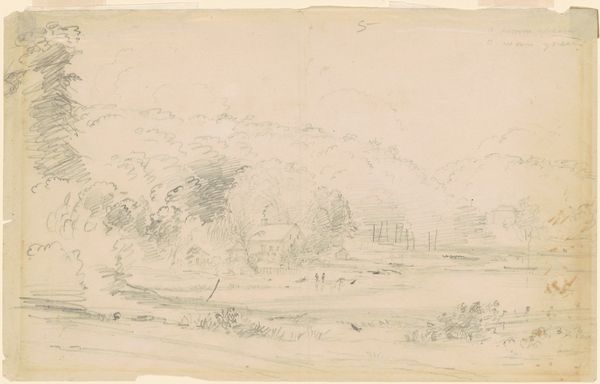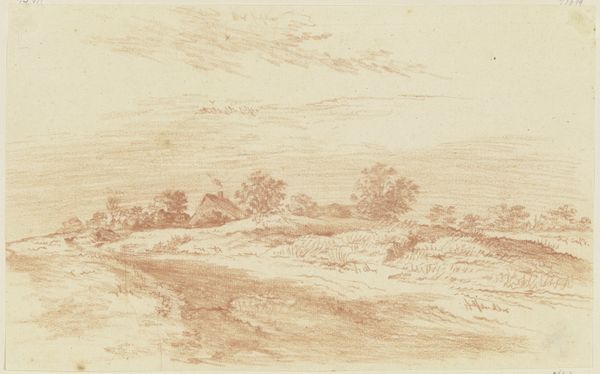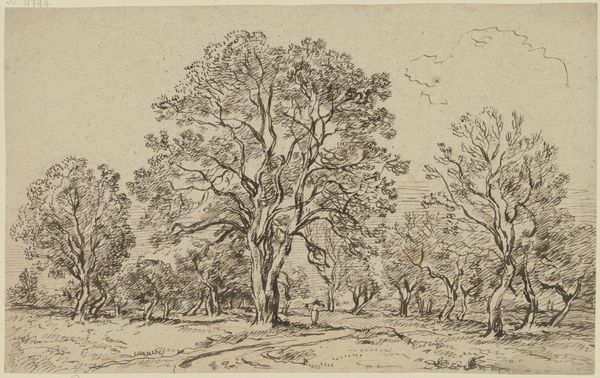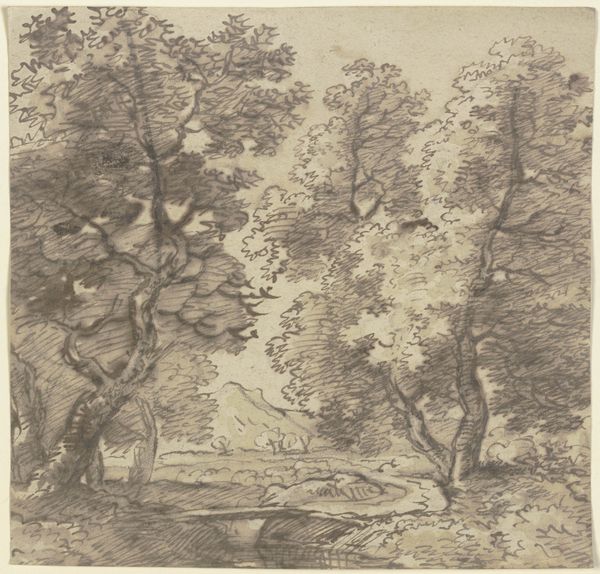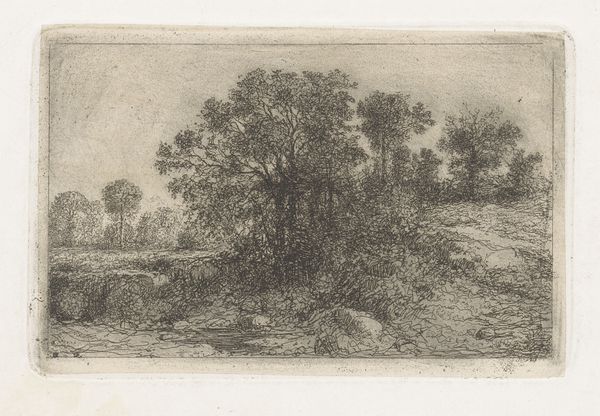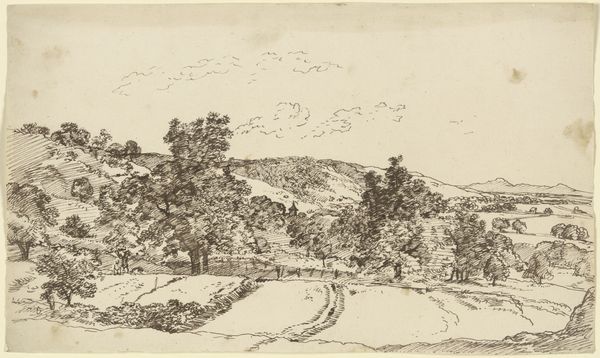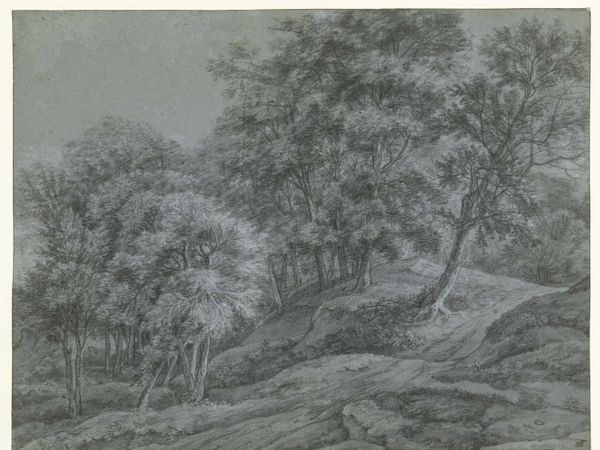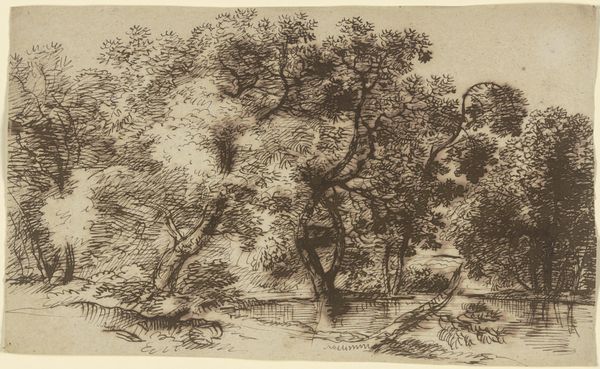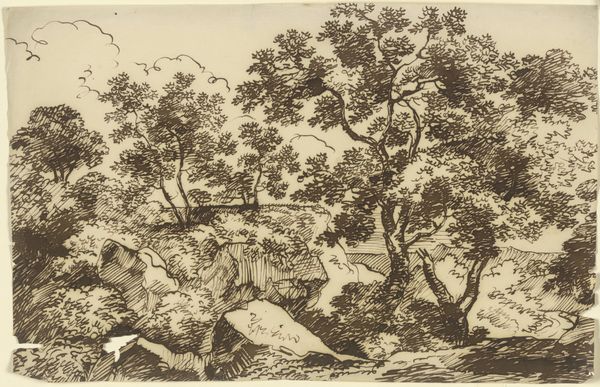
drawing, pencil, graphite
#
drawing
#
pencil sketch
#
landscape
#
pencil
#
graphite
#
northern-renaissance
#
realism
Editor: Here we have "Et skovbryn," or "A fringe of woodland," a graphite drawing by Joakim Skovgaard, from 1880. It's a very peaceful scene, a meticulously rendered landscape... almost hyperrealistic in its details, though softened by the medium. What do you see in this work, Professor? Curator: I see a potent reflection of the Danish Golden Age and its nationalistic tendencies within landscape art. Skovgaard, though working later, builds upon that earlier focus. It's crucial to consider the political climate of the late 19th century. This drawing isn't simply about depicting nature; it's about constructing a visual narrative of Danish identity. Notice the cultivated, almost gentle portrayal of the land. What kind of statement do you think that makes, especially in contrast to the era's increasing urbanization and industrialization? Editor: It feels like an idealized past, a way of holding onto tradition. Is that accurate? Like a visual form of folklore? Curator: Precisely. And consider where this piece would have been displayed – likely in bourgeois homes or public institutions, reinforcing that national narrative among the middle class. The act of sketching itself also connects it to a larger discourse. Pencil drawings such as these are often preparatory, a mode of studying nature intended for translation to a more formal medium. Do you think it's significant that the artist leaves it in this raw state? Editor: It makes the scene feel more immediate and accessible, as if we're looking over Skovgaard's shoulder. I never really thought about landscape art as a political statement, but that really shifts how I view it. Curator: Indeed. Art isn't created in a vacuum, and landscape, in particular, often serves as a canvas for cultural values. Next time you encounter this kind of art, consider what narratives about national identity, social order, and historical memory are embedded within it.
Comments
No comments
Be the first to comment and join the conversation on the ultimate creative platform.

